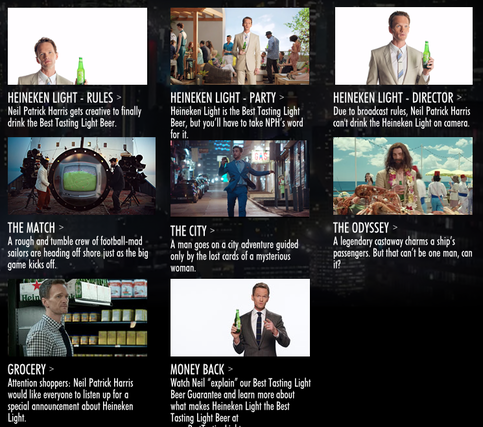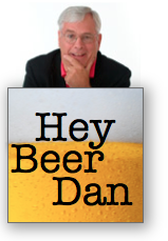On the one hand, there are the mini-movies in which the beer is quite literally a prop. Its name is never even spoken. Virtually all "the content" is entertainment.
On the other hand, there are the decidedly minimalistic Neil Patrick Harris ads pitching Heineken Light. The brand is the co-star of the ad. Its distinctiveness is the content! "Heineken" is the first word spoken at the very beginning of the ad. The key focus is on conveying information: the beer's best-tasting-light-beer assertion and a money-back offer to support it.
Two wildly different advertising directions. "High-cinema/zero-product-claim" versus "low-cinema/high-product-claim." Right-brain versus left-brain. Beer-as-prop versus beer-as-star. Why the split personality?
Illustrated here is the decades-old great debate in beer advertising: image-versus-product. The Heineken mini-movies are pure image ads absent any informational content. The hope is any good feelings generated by the entertainment somehow wash over the brand.
Clients who choose this course buy into a "trust us" promise from the ad-agency folks, the same people whose careers gain most from creating "beautiful film" and calling it advertising. And in virtually every case, the resulting "ad" could be run by any brand in the category, simply by substituting packages and logos. In other words, their mini-movies, however entertaining, are totally ineffective advertising.
Effective advertising always communicates a brand's distinctiveness. That means conveying some differentiating fact that separates the brand from its competition. To be sure, this can be done in an entertaining fashion, but it will never be exclusively entertainment.
Best-tasting light beer + money-back guarantee + an entertaining presenter = effective advertising.
Now that's content.
So, is Heineken learning? Or just conflicted?



 RSS Feed
RSS Feed
